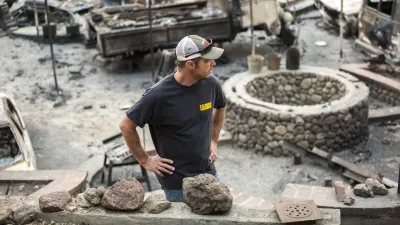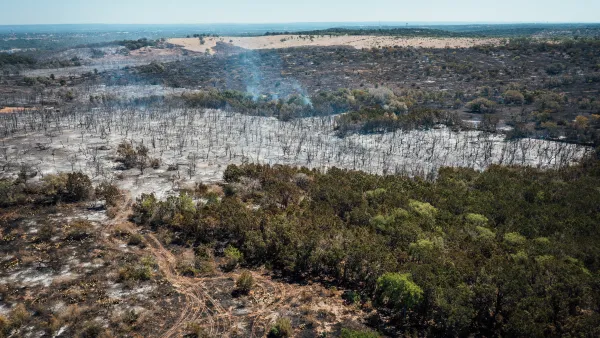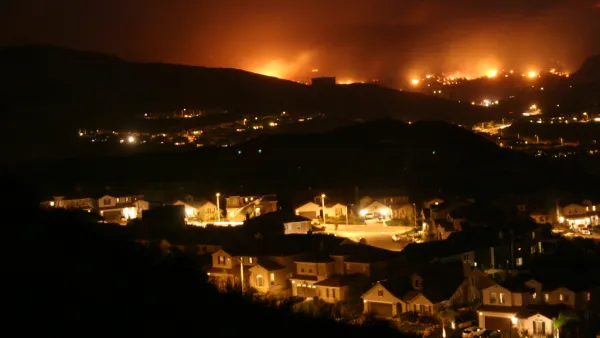Houses that aren't vulnerable to embers blowing in the wind, could save the government and homeowners millions.

Fire damage can seem random. Sometimes houses very close to each other suffer very different consequences from wildfires. Fire expert Jack Cohen encountered the kinds of hazard presented by building materials while investigating ways to combat the spread of wildfires. "People were calling in about houses on fire long before the fire front ever reached their neighborhoods," 99 Percent Invisible reports. It turned out the culprit behind these burning homes were embers carried by the winds landing on flammable wooden shingles.
While not using a flammable housing material would seem to be common sense, Cohen was able to codify the impact of design choices. Cohen's research lead to the conclusion that more emphasis should be put on building fire-resistant properties and less on fighting fires.
"In other words, if structures near fire-prone areas were designed and maintained to withstand fire, we might not need to fight some wildfires at all," 99 Percent Invisible reports. Cohen's argument is further bolstered by the sometimes counterproductive outcomes of putting out wildfires. Because where forests that have not had a burn for many years sometimes become tinder boxes of flammable material, meaning sometimes it would be better to allow a controlled burn to take place than to fight all fires.
"Last year, the federal government spent more than 2 billion dollars fighting fires and just a small fraction of that on prevention and mitigation efforts," 99 Percent Invisible writes. Shifting some of those resources might improve safety for people and property.
FULL STORY: Built to Burn

National Parks Layoffs Will Cause Communities to Lose Billions
Thousands of essential park workers were laid off this week, just before the busy spring break season.

Retro-silient?: America’s First “Eco-burb,” The Woodlands Turns 50
A master-planned community north of Houston offers lessons on green infrastructure and resilient design, but falls short of its founder’s lofty affordability and walkability goals.

Delivering for America Plan Will Downgrade Mail Service in at Least 49.5 Percent of Zip Codes
Republican and Democrat lawmakers criticize the plan for its disproportionate negative impact on rural communities.

Test News Post 1
This is a summary

Test News Headline 46
Test for the image on the front page.

Balancing Bombs and Butterflies: How the National Guard Protects a Rare Species
The National Guard at Fort Indiantown Gap uses GIS technology and land management strategies to balance military training with conservation efforts, ensuring the survival of the rare eastern regal fritillary butterfly.
Urban Design for Planners 1: Software Tools
This six-course series explores essential urban design concepts using open source software and equips planners with the tools they need to participate fully in the urban design process.
Planning for Universal Design
Learn the tools for implementing Universal Design in planning regulations.
EMC Planning Group, Inc.
Planetizen
Planetizen
Mpact (formerly Rail~Volution)
Great Falls Development Authority, Inc.
HUDs Office of Policy Development and Research
NYU Wagner Graduate School of Public Service





























